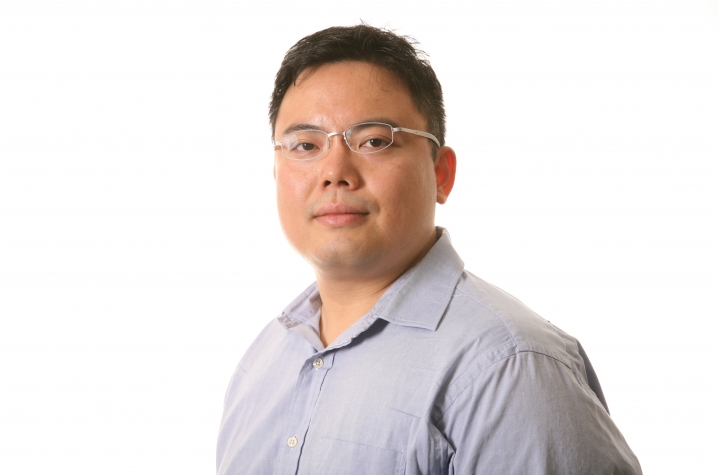Applying Engineering Innovation to Autism Therapies

LEXINGTON, Ky. (March 23, 2012) — Sen-Ching (Samson) Cheung is an associate professor in the University of Kentucky College of Engineering's Department of Electrical and Computer Engineering and a faculty member within the UK Center for Visualization and Virtual Environments. Like most professors, he is deeply involved in engineering research. Most of his research has been in the area of multimedia information analysis.
"I enjoy solving problems and developing new theories, working on new technology and future products," Cheung explains. "But something like video surveillance does not impact me personally. At the end of the day, I can leave my research in the lab."
The distance between professional research and personal impact was shortened a few years ago when Cheung and his wife began to detect developmental delays with their son. They noticed he displayed poor social interaction skills and wouldn’t look anyone in the face, not even his parents. He also preferred to play by himself in the corner and avoid social contact. Eventually, they had him tested; the diagnosis: autism spectrum disorder.
"Though we were disappointed about the diagnosis, we began taking our son to different therapies and reading about effective ways to help children with autism," Cheung recalls.
One therapy involved letting their son watch videos of other kids performing skills he needed to learn for himself. However, autistic children typically do not respond well to videos of other kids because there is no connection; they can't relate to them. However, according to recent research in autism, autistic children do relate to their own face and have little problems recognizing it in a mirror. Thus, an idea was birthed: what if their son and other autistic children could watch themselves accomplishing basic daily living tasks? Given their inclination to look at themselves, they would be more likely to develop those skills.
The problem with such an approach is obvious: how do you record a child doing something he or she has never actually done?
"That’s where engineers come in," Cheung says with a grin.
Working with UK pediatric professor Dr. Neelkamal Soares, autism expert from the UK College of Education Lisa Ruble and developmental psychologist from the College of Arts and Sciences Ramesh Bhatt, Cheung has submitted proposals for funding to develop what is called a "virtual mirror." In the virtual mirror, a child will be able to look at himself in a large computer display. As he is looking at himself, the program will take his image and virtually create the child carrying out the very actions he needs to learn (speaking, sitting still, social interactions with others, etc.). Through seeing the instant visual feedback from the virtual mirror, Cheung hopes that this new technology can help autistic children like his son better concentrate on behavioral learning and generalizing abstract concepts to daily life.
Cheung is eager to put his knowledge to work in research he could never have foreseen.
"Developing something new that will help autistic children is incredibly rewarding for me. I am taking my background and expertise and connecting them to something I have a personal stake in seeing succeed. It’s for our child and also for countless other parents of autistic children who need help. Not many professors get to come to work as personally invested in their research as I am, and as my graduate students — who come to my house often and play with him — are."
Cheung is conducting preliminary stages of his research in the recently dedicated Davis Marksbury Building. He believes the distinctive features of the new facility will give him and his team an advantage as they investigate this new field. His optimism is both refreshing and contagious.
"I am hopeful for the virtual mirror’s possibilities — it is the most important work I have ever done," he says. "But even more so, I am extremely hopeful for my son."
MEDIA CONTACT: Jenny Wells; (859) 257-5343; Jenny.Wells@uky.edu




